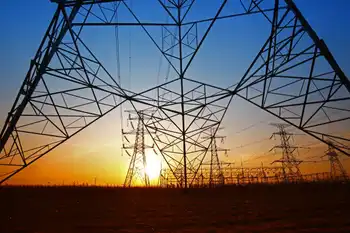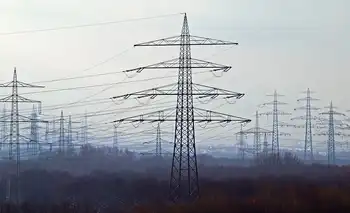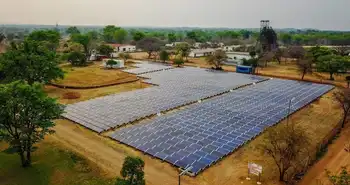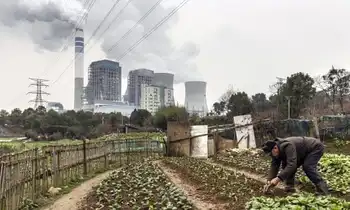Green energy firms get big lift from stimulus
The more than $57 million coming directly to the state for weatherization is expected to create hundreds of construction jobs needed to make low-income households more energy efficient.
Billions of dollars more directed nationwide at alternative energy are expected to help build solar and wind-power plants that could help companies in Arizona, which have seen a slowdown in activity amid the recession.
But many of the organizations are waiting to see exactly how fast the money will translate into jobs.
"It is to be seen how this money will be delivered to the economy," said Gregory Lawrence, a partner with the energy group McDermott Will & Emery LLP in Boston.
Stimulus funds are widely viewed as just the beginning of pledges made by the new president's administration to prop up the renewable-energy industry.
Alternative energy also should see a significant boost if the administration moves ahead with proposals to limit the amount of emissions that come from coal-fired power plants and create a national requirement that utilities provide a set amount of renewable energy.
"You can look at greenhouse-gas regulations as a drag on the economy, and you also can look at it as appropriate costing of a harmful gas and creating a more even playing field between renewable-energy generation and carbon generation," Lawrence said.
Here are some of the key areas of the stimulus that could affect Arizona's energy industry:
Household
The U.S. Department of Energy announced that Arizona would receive $57 million to help weatherize low-income homes and another $55.4 million for the state energy program, which weatherizes homes and is involved in several other energy-efficiency and renewable-energy programs.
All told, the state is getting about a tenfold increase in the amount of money that community organizations can dole to people struggling to pay utility bills and better insulate their homes, said Cynthia Zwick, executive director of the Arizona Community Action Association.
The associations throughout the state that use the money are looking to train more air-conditioning technicians, plumbers and electricians who are contracted to make low-income homes more energy efficient, she said.
"We are re-employing people who have been laid off in this economy," she said.
Last year, the organization weatherized 850 Arizona homes, with a maximum spending of $2,500 per home, she said. The stimulus not only increased the overall funding, but raised the amount that can be spent per home to $6,500.
"That is wonderful because now you can completely weatherize a home," she said.
Solar Energy
Three things in the stimulus package are expected to help develop large solar-power plants.
The first is funding for a smart electricity grid and support for new transmission lines for renewable-energy projects.
"That does affect our business and help our business," said Brian Rasmussen, the Arizona director of project development for Oakland-based BrightSource Energy Inc.
"There are some private transmission projects in Arizona that we understand will be looking to apply for stimulus funds."
Solar-power developers have been scouting sites in Arizona near existing transmission lines, but even the existing network will need to expand to accommodate more generators, he said.
Alternative-energy power plants also should get a boost from a nuance in one of the existing federal incentives. Instead of getting a 30 percent tax credit that can be taken over five years, such projects can now get 30 percent grants paid up front, which should significantly help financing.
"That is a big incentive," he said.
Loan guarantees also provided in the stimulus could ease the credit crunch large projects are facing, he said, although nothing does as much to spur the industry as renewable-energy requirements placed on utilities.
Wind Power
Wind-power proponents spent most of 2008 pushing for an extension of a production tax credit and finally won a year extension, and the stimulus gives those credits a three-year extension that should provide the industry some continuity, officials said.
That 30 percent tax credit also can be taken as an up-front grant, which should help finance new wind farms, said Steven Lockard, president and CEO of TPI Composites Inc. in Scottsdale, which makes blades for wind turbines at factories outside of Arizona.
But even with loan guarantees and the new provision for the 30 percent investment grants, large wind farms are finding it hard to get loans in the current credit market, he said.
"We are very pleased to see the three-year extension, and those that voted for it, we thank them," he said. "But we're still concerned about the cost of debt and the lack of free-flowing debt. We need to see that change... for the markets to really recover."
Alternative Vehicles
Natural-gas fueled, hybrid electric, pure electric and other alternative transportation also should see a boost from the stimulus.
The act directs $300 million to Clean Cities coalitions, which help spur fueling stations and other measures for alternative vehicles. Another $400million is targeted directly at electric-vehicle infrastructure.
The Tucson area is working on building electric infrastructure in a partnership with Nissan that was announced this month.
"We're not quite sure yet who will be the applicant (for those grants), but our thought is to tap into this money," said Colleen Crowninshield, who manages the Clean Cities program for the Pima Association of Governments.
The coalition is looking across the state for vehicle fleets, including school-bus fleets, that want to add natural-gas vehicles or biodiesel-burning buses, and hopes to help them apply for the grants from the stimulus to institute them.
Consumers
People who want to put solar panels or wind turbines on their homes are expected to be able to apply for the 30 percent tax credit to be taken up front as a grant, just like large power plants, although details are not yet available on how to apply.
Previously, solar hot-water heaters, a far more economical way to tap sun power, had a tax-credit cap of $2,000. That cap has been removed and now those systems qualify for a full 30 percent incentive just like solar panels that make electricity.
People hoping to buy electric vehicles will qualify for a $7,500 tax credit.
Related News

Altmaier's new electricity forecast: the main driver is e-mobility
LONDON - Gross electricity consumption in Germany will increase from 595 terawatt hours (TWh) in 2018 to 658 TWh in 2030. That is an increase of eleven percent. This emerges from the detailed analysis of the development of electricity demand that the Federal Ministry of Economics (BMWi) published on Tuesday. The main driver of the increase is therefore the transport sector. According to the paper, increased electric mobility in particular contributes 68 TWh to the increase. Around 44 TWh of this should be for cars, 7 TWh for light commercial vehicles and 17 TWh for heavy trucks. If the electricity…





